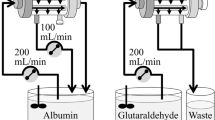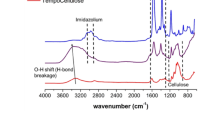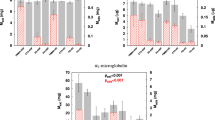Abstract
Polymethylmethacrylate (PMMA) membrane is the first synthetic polymeric hollow fiber used in dialyzers that is known to adsorb β2-microglobulin. Polyester polymer alloy (PEPA), a blend of two polymers, i.e., polyarylate and polyethersulfone, is another dialysis membrane material with adsorption characteristics. In this study, the adsorption and permeation characteristics of BG-1.6PQ (PMMA) and FLX-15GW (PEPA) dialyzers were investigated by performing ultrafiltration experiments using chymotrypsinogen (molecular weight 25 000) and albumin (molecular weight 66 000) as test solutes. Although PMMA and PEPA had the same sieving coefficient for chymotrypsinogen at steady state, PMMA showed approximately 20% higher fractional adsorption than PEPA under the same initial concentrations. The fractional adsorption for albumin was approximately 20% in PEPA regardless of the ultrafiltration flow rate. The fractional adsorption for albumin in PMMA, however, increased as the ultrafiltration flow rate increased and reached 50%–60% after 10 h. Since PEPA has two skins, one inside and one outside the hollow fiber, proteins may have been adsorbed mainly by these two layers. However, since PMMA is a uniform membrane and since the higher the ultrafiltration flow rate, the higher the fractional adsorption found in PMMA, adsorption may be the result of the occlusion of the dense structure of the membrane. The amount of albumin loss is often clinically evaluated by measuring the amount of permeated albumin in the dialysate. However, when dialyzers with adsorption characteristics are examined, the loss by adsorption should also be taken into account.
Similar content being viewed by others
References
Yamamoto K, Hiwatari M, Kohori F, Sakai K, Fukuda M, Hiyoshi T. Membrane fouling and dialysate flow pattern in an internal filtration-enhancing dialyzer. J Artif Organs 2005;8:198–205
Gejyo F, Yamada T, Odani S, Nakagawa Y, Arakawa M, Kunitomo T, Kataoka H, Suzuki M, Hirasawa Y, Shirahama T, Cohen AS, Schmid K. A new form of amyloid protein associated with hemodialysis was identified as β2 microglobulin. Biochem Biophys Res Commun 1985;129:701–706
Matsuda K, Hirasawa H, Oda S, Shiga H, Nakanishi K. Current topics on cytokine removal technologies. Ther Apher 2001;5:306–314
Sakai Y, Tsukamoto H, Fujii Y, Tanzawa H. Formation of poly(methyl methacrylate) membranes utilizing stereocomplex phenomenon. New York: Plenum Press: Ultrafiltration Membranes and Applications Plenum, 1980;99–107
Aoike I. Clinical significance of protein adsorbable membranes — long-term clinical effects and analysis using a proteomic technique. Nephrol Dial Transplant 2007;22(suppl 5):v13–v19
Shimizu M, Kanamori T, Sakai K, Igoshi T, Yoshida M. New polymer alloy dialysis membranes with varying permeabilities and sievings. ASAIO J 1992;38(4):784–787
Sugaya H. PMMA membrane (II-B). In: Takesawa S, Arakawa M, Fukuda M (eds) High-performance dialyzer 2008. Tokyo: Tokyo Igakusha, 2008;25–36 (in Japanese)
Yamashita AC, Sakiyama R, Hamada H, Tojo K. Two new definitive equations of the sieving coefficient. Kidney Dial (Jin To Toseki) 1998;45:S36–S38 (in Japanese)
Mineshima M. Effects of operating conditions on separation characteristics in hemofilters. J Tokyo Womens Med Coll 1996;66:283–291 (in Japanese)
Hirasawa H, Oda S, Matsuda K. Continuous hemodiafiltration with cytokine-adsorbing hemofilter in the treatment of severe sepsis and septic shock. Contrib Nephrol 2007;156:365–370
Matsuda K, Hirasawa H, Oda S, Shiga H, Nakanishi K. Current topics on cytokine removal technologies. Ther Apher 2001;5:306–314
Nakada T, Oda S, Matsuda K, Sadahiro T, Nakamura M, Abe R, Hirasawa H. Continuous hemodiafiltration with PMMA hemofilter in the treatment of patients with septic shock. Mol Med 2008; 14(5–6):257–263
Author information
Authors and Affiliations
Corresponding author
Rights and permissions
About this article
Cite this article
Tomisawa, N., Yamashita, A.C. Amount of adsorbed albumin loss by dialysis membranes with protein adsorption. J Artif Organs 12, 194–199 (2009). https://doi.org/10.1007/s10047-009-0469-0
Received:
Accepted:
Published:
Issue Date:
DOI: https://doi.org/10.1007/s10047-009-0469-0




